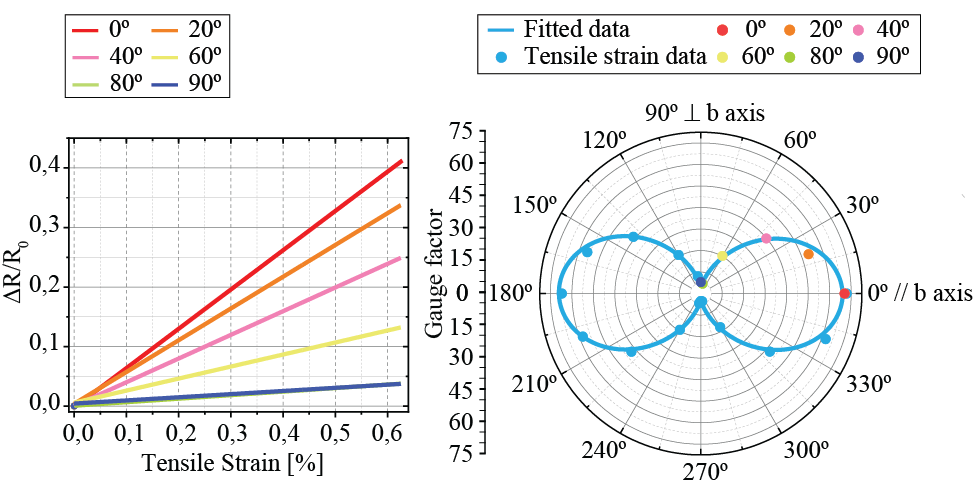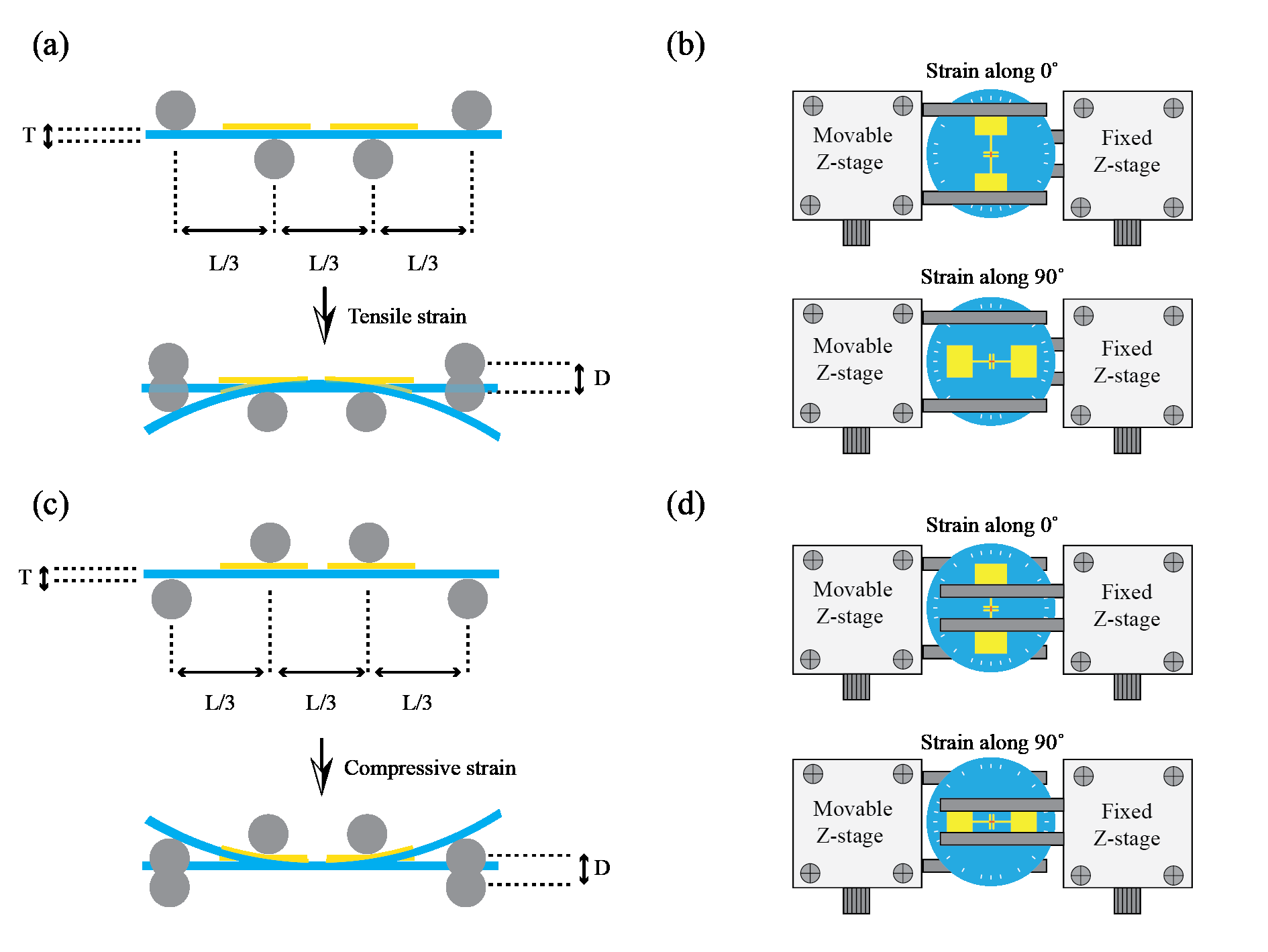Giant anisotropic piezoresponse in layered ZrSe3
Authors: Roberto D’Agosta, Ikerbasque Research Professor at ETSF and the Department of Materials Physics, Faculty of Chemistry, UPV/EHU, San Sebastian; Andrés Castellanos-Gómez, Instituto de Ciencia de Materiales de Madrid (ICMM-CSIC).
Two-dimensional (2D) materials have become a centrepiece of modern materials science, captivating researchers with their electronic, mechanical, and optical properties. Since Geim and Novoselov discovered the exfoliation technique in 2004, thousands of 2D materials have been discovered, synthesised, or predicted. In particular, anisotropic 2D materials display direction-dependent characteristics, promising cutting-edge applications in flexible electronics and sensors.
Our recent studies 1 have delved deep into the deformation response of layered transition metal trichalcogenides, particularly ZrSe3, uncovering unprecedented anisotropy in their electrical behaviour under strain.

Anisotropic piezoresponse in ZrSe3
ZrSe3 stands out for its quasi-1D electrical properties and in-plane anisotropy derived from its low-symmetry crystal structure. Our work reveals a remarkable dependence of piezoresponse—defined as the change in electrical resistance upon strain—on both the direction of electrical transport and the orientation of applied strain. Specifically, devices with current flowing along the facile b-axis exhibited a gauge factor (GF) of 68 when the strain was applied along the same direction, compared to a mere GF of 4 when strained along the orthogonal a-axis, resulting in an anisotropy ratio of nearly 90%, the highest reported for electrical properties of 2D materials.

Tensile and compressive strain effects
Using a four-point bending setup purportedly developed in our group, we systematically applied tensile and compressive strains to ZrSe3 devices. Our device allows us to rotate the sample with respect to the orientation of the applied mechanical deformation. Intriguingly, tensile strain increased the material’s resistance by widening its electronic bandgap, while compressive strain reduced resistance. Ab-initio numerical calculations confirmed these experimental observations, shedding light on the role of Zr’s d-orbitals in mediating this anisotropic response. Our experiments also show a minimal sensitivity to repeated strain-unstrain cycles, marking significant reproducibility and reliability of our results.
Implications and applications
The large anisotropic piezoresponse opens the door for designing direction-sensitive flexible electronic devices. Potential applications include strain gauges, wearable sensors, and components for next-generation flexible circuits. The findings underscore the promise of ZrSe3 and other anisotropic 2D materials as building blocks for future technologies.
This work represents a leap forward in understanding and harnessing the properties of anisotropic 2D materials. The selective responsiveness of ZrSe3 to strain marks it as a key candidate for innovations in flexible electronics, solidifying its position in the growing landscape of advanced materials.
References
- B. Radatovic, H. Li, R. D’Agosta, A. Castellanos-Gómez (2024) Giant anisotropic piezoresponse of layered ZrSe3 Nanoscale Horizons doi: 10.1039/d4nh00539b ↩